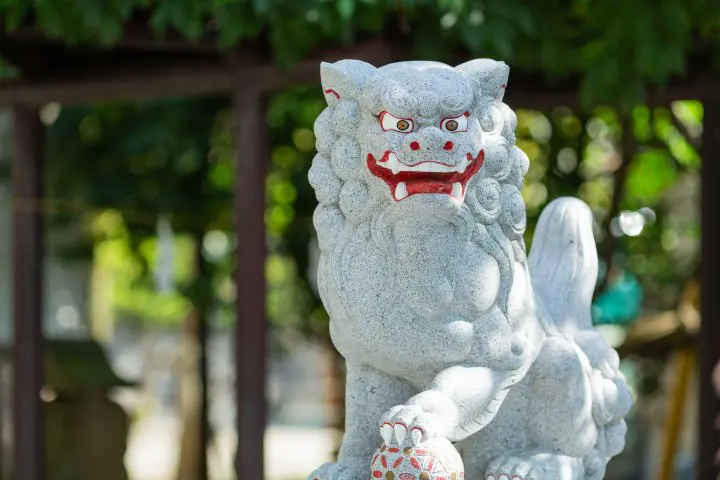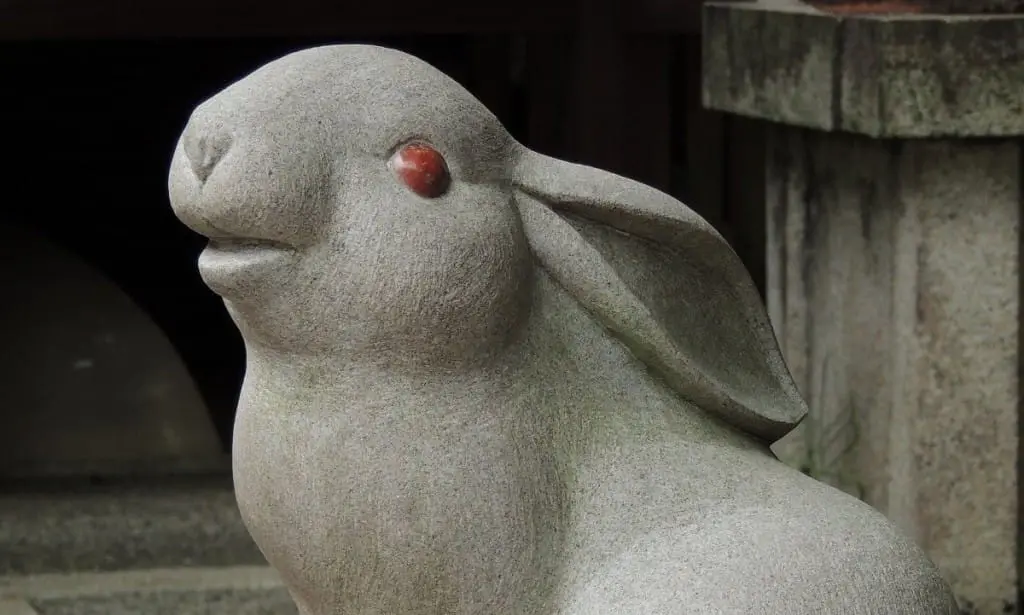Komainu (Lion-Dogs) - Japanese Encyclopedia

Komainu stand proudly at most shrines and even some temples all across Japan. But what do these interesting, frightening and sometimes funny creatures represent?
Komainu (狛犬) are statues of an imaginary beast represented as a lion-dog. They function as both guardians and messengers for the deities at Shintō shrines. Komainu statues can be found in pairs at the entrances to shrines and temples or placed in front of the main buildings of these sites of worship, facing each another.
The origin of the lion-dog is a bit of an enigma. Many theories abound, including some that wonder whether they were influenced by the Egyptian sphinx or Cerberus from Greek mythology. Others consider the possibility of a connection to the famous Shīsā (lion-like dogs) found in Okinawan beliefs.
Notice the Differences Between the Left and the Right Komainu

Photo by Pixta

Photo by Pixta
Typically, when facing towards them, the komainu on the right has its mouth open, while the one on the left has its mouth closed. The mouth positions of these lion-dogs have their own specific names: the open mouth is a position called agyō while the tightly closed mouth is called ungyō.
With creatures like both the shīsā and komainu found in Buddhist structures in China and Korea, it is believed that the Japanese sounds "a" and "un" (which are readily recognized by Japanese speakers in these mouth positions) are intended to represent the sacred Buddhist sound of "Aum".
Deers and Rabbits too? The Friends of Komainu

The design of the komainu found at shrines and temples varies greatly; there are simply too many to mention them here. There are even statues that feature komainu suckling their young. Part of the fun of visiting these sacred sites is to see what sort of komainu they have guarding their grounds.
And the komainu might not even be a lion-dog! Foxes, rabbits, lions, even deer statues can also be found at different shrines all across Japan. In these instances, they are referred to as komagitsune (guardian foxes), komatora (guardian tigers) and so forth. The guardian animal that holds this position in the temples or shrines is dependent on which deity or deities are enshrined at that particular location.
For example, the Inarigami of Inari shrines is protected by foxes, while Bishamonten is protected by tigers, and Benzaiten by snakes. Now that you have learned this point, the next time you visit a shrine with tiger statues, you will be able to say that "this must be where Bishamonten is enshrined". You will be a shrine master in no time if you keep this up! Please try to remember these details for when you are traveling to different shrines and temples across Japan.
Read also
Man image by Pixta
東京生まれ東京育ち東京在住の20歳。大学生をしています。動物とたわむれることと散歩をすることがとっても好きです。世界中の野生の動物に会いに行ったり、世界中の街を散歩しに行ったり、いつかできたらいいなぁ、なーんて思ってます。



































![[Coupon Available] Attention Overseas Winter Sports Fans! Nagano's Sports Depot Has Evolved](https://resources.matcha-jp.com/resize/720x2000/2026/01/05-254819.webp)
![[2 hours from Tokyo ] 10 Quiet and Breathtaking Views of Mount Fuji in Yamanashi Hokuto City , Yamanashi - Part 2](https://resources.matcha-jp.com/resize/720x2000/2025/12/16-253037.webp)
